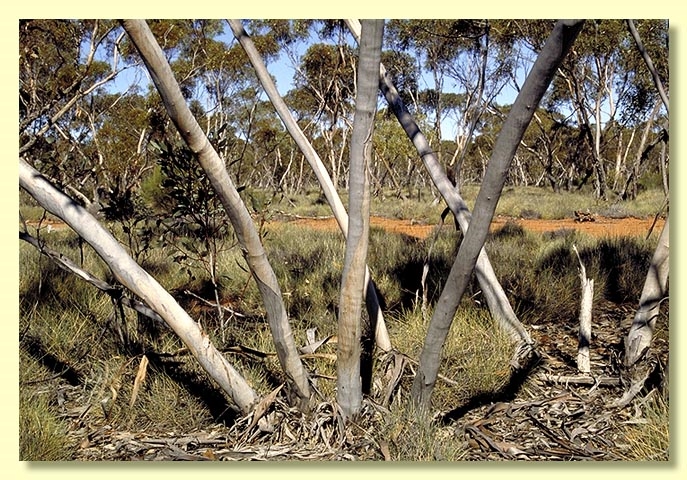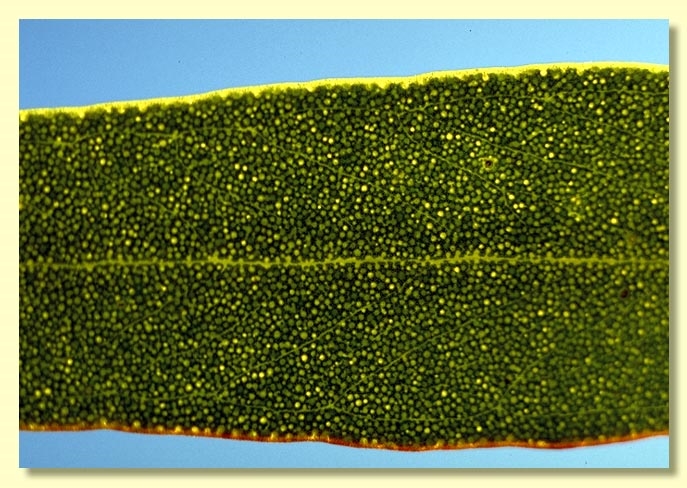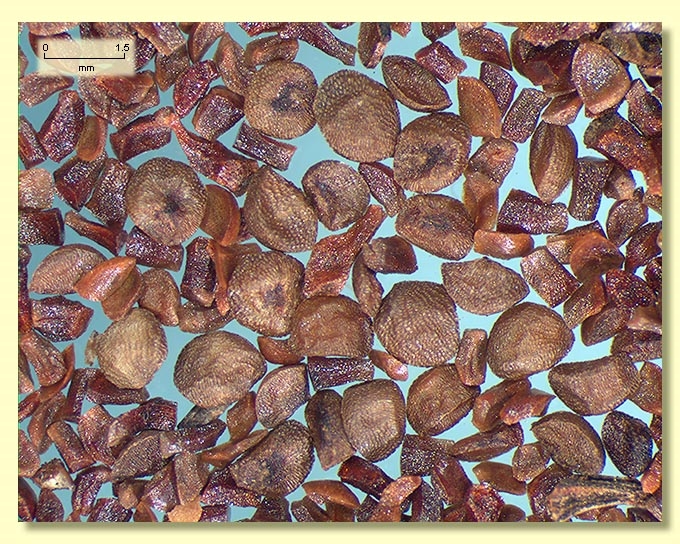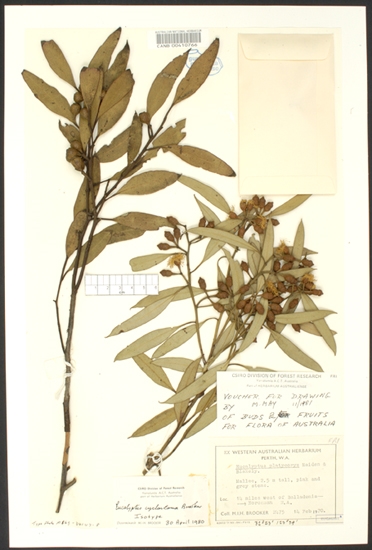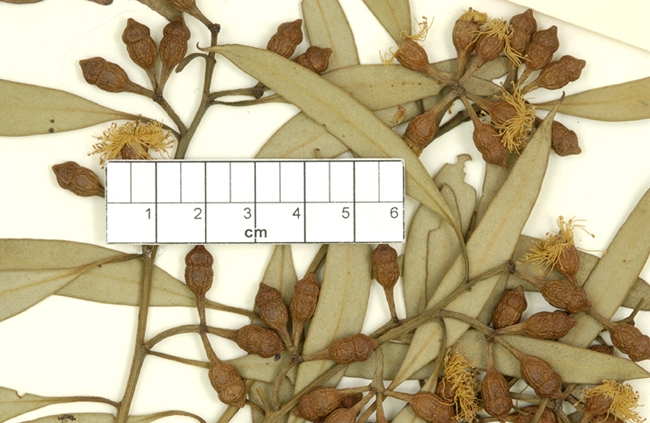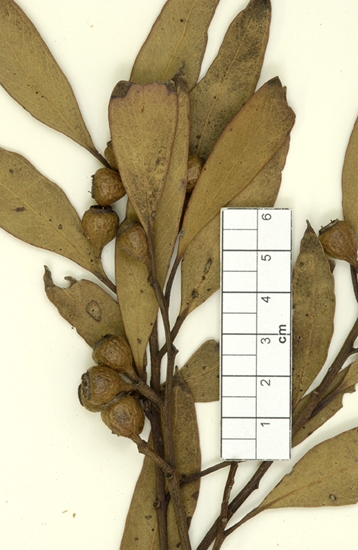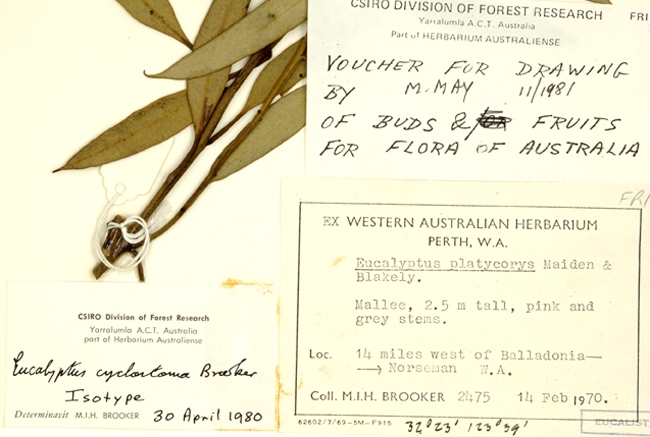Eucalyptus | Symphyomyrtus | Dumaria | Ovulares
Euclid - Online edition
Eucalyptus cyclostoma
Bark smooth throughout, whitish grey to cream, brown and pinkish grey.
Branchlets with oil glands in pith.
Juvenile growth (coppice or field seedlings to 50 cm): not seen.
Adult leaves alternate, petioles 0.7–1.8 cm long; blade lanceolate, 6–10 cm long, 1–1.5 cm wide, base tapering to petiole, margin entire, apex pointed, concolorous, dull, bluish green weathering only slightly glossy, green, midrib, acute side-veins and intramarginal vein only present (i.e. no reticulation) or all venation except midrib obscured by numerous round oil glands.
Inflorescence axillary unbranched, peduncles 0.8–2 cm long, buds 7, 9 or 11 per umbel, pedicels 0.3–0.7 cm long. Mature buds cylindrical to pyriform in coarse outline but with conspicuous constriction at join of hypanthium and operculum (0.8–1.4 cm long, 0.5–0.7 cm wide), scar present, operculum beaked, often wider than hypanthium (0.3–0.7 cm long), stamens inflexed, anthers oblong, versatile, dorsifixed, dehiscing by longitudinal slits, style long and straight, stigma rounded to blunt, locules 3 or 4, the placentae each with 4 vertical rows of ovules. Flowers white.
Fruit pedicellate (pedicels 0.3–0.8 cm long), usually truncate-globose, surmounted by a prominent erect thin annular rim, 0.8–1 cm long, 0.7–1 cm wide, disc descending vertically, valves 3 or 4, at rim level.
Seeds mid-brown, 1–2 mm long, flattened-ovoid, dorsal surface shallowly and clearly reticulate, hilum ventral.
Cultivated seedlings (measured at ca node 10): cotyledons reniform; stems square to rounded in cross-section; leaves always petiolate, opposite for 3 to 5 nodes then alternate, lanceolate to narrowly so, 5–7.5 cm long, 1–2 cm wide, dull, green to greyish green.
Flowering has been recorded in February and April.
A smooth-barked mallee endemic to Western Australia, occurring in low woodlands on red sands. It has a very restricted distribution, occurring around Balladonia and also near Zanthus. It has a green to bluish green dull to slightly glossy crown and plump buds with a conspicuous constriction at the base of the operculum.
Eucalyptus cyclostoma belongs in Eucalyptus subgenus Symphyomyrtus section Dumaria because the buds have two opercula, stamens are strongly inflexed, ovules are in four rows on the placentae and cotyledons are reniform. Within section Dumaria it belongs to a small subgroup of nine closely related species which are together called series Ovulares. The series is further diagnosed by glandular pith, cuboid anthers, and seeds with a brown shallowly and clearly reticulate dorsal seedcoat.
Some of the species in series Ovulares are completely smooth-barked (E. cyclostoma, E. cylindrocarpa, E. exigua and smaller plants of E. oraria) while others (E. aequioperta, E. baudiniana, E. comitae-vallis, E. myriadena and E. ovularis) have rough bark over at least part of the stems.
There are two species closely related to E. cyclostoma that also have constricted buds: E. comitae-vallis from the wheatbelt north and east of Perth, with several disjunct populations in the goldfields, e.g. Comet Vale; and E. exigua from east of Hyden. Both these species, however, have smaller buds and fruit and glossy green adult leaves. Other species in series Ovulares do not have constricted buds.


